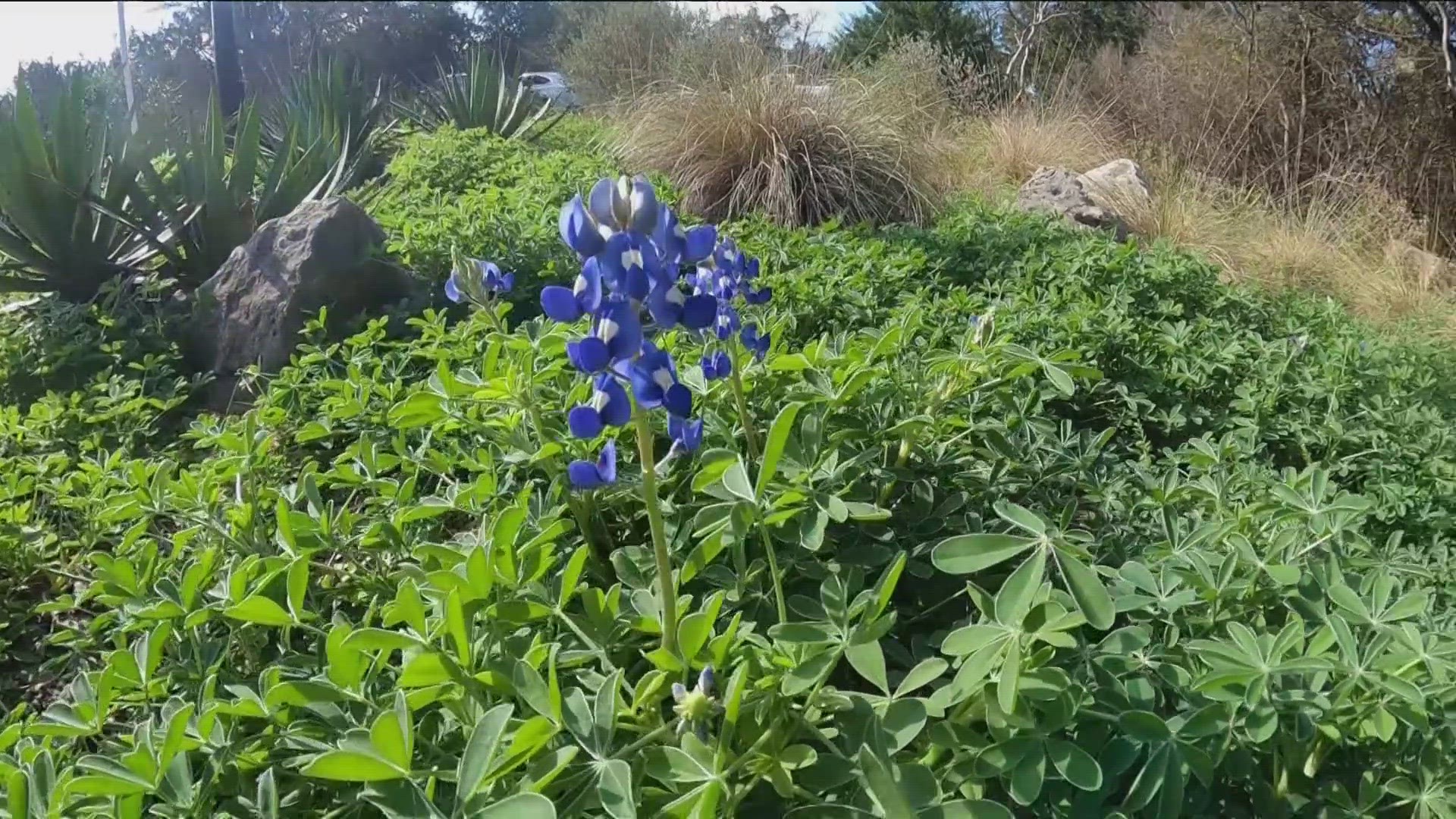HOUSTON — We are already starting to those bright blue blooms that Texans know and love – bluebonnets! Experts are saying that this year could be an amazing wildflower season and it could come early.
Traditionally, peak bluebonnet season happens in early April. However, they start blooming in Central and East Texas toward the end of March.
YOUR PICS: We want to see your bluebonnet photos. Submit them here or text them to 713-526-1111.
So why will this year be fantastic?
According to Lee Clippard, the executive director, at the Lady Bird Johnson Wildflower Center in Austin, it’s a mixture of the drought last year steering away competition for bluebonnets and there has been a decent amount of rain this year. He said that makes the perfect combination for bluebonnets to bloom.
Can you pick bluebonnets?
Let's debunk a rumor about bluebonnets. According to Clippard, it's not illegal to pick them, but experts encourage you to leave them alone for everyone to enjoy.
That doesn't apply to private property and it's against the rules to pick, cut, or destroy any wildflower or plant life on the grounds of a Texas State Park.
Where to find wildflowers in and around Houston
If you don't want to venture too far, you can see pretty patches of wildflowers in and around Houston.
Here are a few top spots:
- Memorial Park - 6501 Memorial Drive, Houston
- McGovern Centennial Garden – 1500 Hermann Drive, Houston
- Terry Hershey Park – 15200 Memorial Drive, Houston
- Rob Fleming Park – 6055 Creekside Forest Drive, Spring
- Mercer Botanic Gardens – 22306 Aldine Westfield Road, Humble
Fort Bend County flowers
The Wildflower Center says Brazos Bend State Park in Needville is home to an amazing variety of wildflowers. Along with bluebonnets, you might spot Texas spider lilies, floating bladderworts, basket flowers, black-eyed Susans, morning glory vines and wild indigos.
Just watch out for gators while you're posing for those pretty pics!
Brazoria County bluebonnets
The road less traveled to soak in the beauty of bluebonnets and other native flowers is a 70-mile loop in Brazoria County, southwest of Houston.
At Brazoria National Wildlife Refuge, you'll find sea oxeye daisy, tropical sage, coreopsis, yellow thistle, and spider lily, as well as sedges, rushes, and cattails.
At the San Bernard National Wildlife Refuge, look for sea oxeye daisy along with irises and water lilies and the state champion live oak tree.
Directions: From Houston, take TX 288 south to FM 1462. Go right (west). At Damon, head south onto Texas 36 through West Columbia to FM 2004. Rejoin Texas 288 near Lake Jackson. Google Map it
Wildflower road trips
If you want to find fields blanketed with bluebonnets, you’ll need to hit the road.
The staff at the Lady Bird Johnson Wildflower Center teamed up with Texas Highways and Texas Monthly magazines to recommend some routes.
Brenham Bluebonnet Loop
You’ll see some of this area’s most impressive wildflowers by heading northwest on 290 toward Brenham, about 75 miles from Houston. It’s a popular route dating back decades for Southeast Texans in search of their annual flower fix.
Once you get to Brenham, travel the Bluebonnet Loop for 80 miles through Washington County. You’ll pass through Burton, Independence, Washington and Chappell Hill before heading back to Brenham.
“Expect fields full of bluebonnets, plus coneflower, prairie verbena, beardtongue, coral bean, skullcaps, prairie parsley, Indian paintbrush, blue-eyed grass, rattlesnake flower, blanket flower and rosinweed,” the Wildlife Center says.
Directions
- From Brenham, northeast on TX 105
- Turn right onto FM 1155 south to Chappell Hill
- Turn right on US 290, take the Austin exit to stay on 290 for 14 miles
- Head toward FM 1697 in Burton before turning right onto FM 390
- At Old Baylor Park in Independence, turn right on FM 50
- Go back to TX 105 and Brenham
According to Google Maps, this trip will take you about 90 minutes not counting stops.
Note: The following video was uploaded in April 2022
Wildflower Capital of Texas
If you have time for a day trip, head southwest to DeWitt County, dubbed the Wildflower Capital of Texas by the state legislature in 1999.
This area is home to more than 1,000 different kinds of wildflowers according to the Wildflower Center.
You can stop by the Cuero Chamber of Commerce for a map of trails and a brochure to help you identify the flowers.
There are a few options heading out I-10 depending on what small towns you want to pass through.
Lady Bird Johnson Wildflower Center
If you’re in the Austin area during wildflower season, make time to visit the Lady Bird Johnson Wildflower Center.
It was founded by the former first lady and Helen Hayes as the National Wildflower Research Center in 1982. It was renamed the Lady Bird Johnson Wildflower Center in 1997.
The center eventually evolved into a botanic garden and a University of Texas research unit that focuses on plant conservation, landscape restoration and sustainable landscape design.
It's open daily from 9 a.m. to 5 p.m. but you’ll need a reservation.
Admission prices
- Adults: $15
- Seniors 65+: $10
- Military with ID: $13
- Youth ages 5-17: $8
- Members, UT students and staff and children 4 and under are free
You can also track the best wildflower spots and share your photos on Texas Wildflower Watch.
Safety tips
- Beware of snakes and fire ants when walking through the wildflowers - gators too in some areas.
- Park parallel to the road and in the direction of traffic
- Don't cross lanes of traffic on foot to get to the flowers

